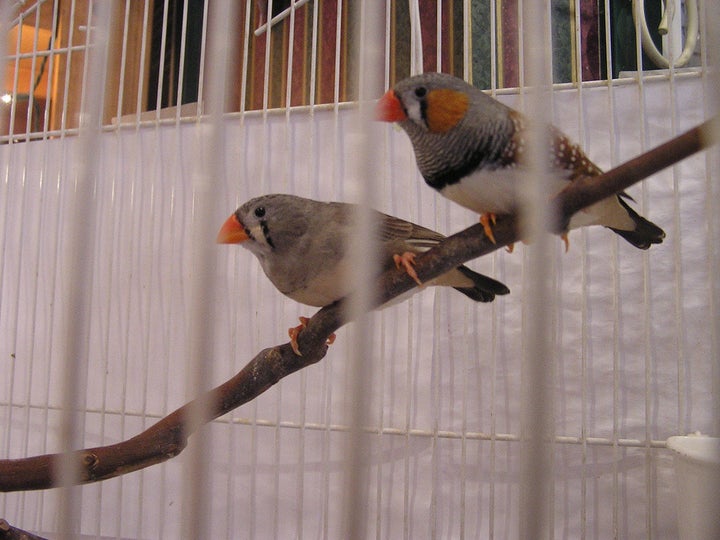
Certain animal species are both sexually and socially monogamous, meaning that strong pair bonds are formed between two individuals, and these bonds withstand the test of time. Among the most faithful pair-bonded species are zebra finches, which have been shown to forge extremely long-lasting and exclusive partnerships that end only with the death of a partner. Partners engage in several behaviours outside those involving direct sexual contact, including mutual preening, nest defense, and foraging. It has been observed that zebra finches are capable of forming both heterosexual partnerships and homosexual ones -- and researchers recently questioned the role of the sex ratio in determining the frequency of such affiliations. Not only were they interested in the frequency of same-sex partnerships in skewed sex-ratio conditions, but they were also interested in the nature of the same-sex partnerships: Are homosexual partnerships as stable as heterosexual ones? Do homosexual partners engage in the same ritualistic behaviors as heterosexual couples? How do homosexual and heterosexual relationships compare when it comes to attentiveness and intensity of interactions?
In the study, captive zebra finches (laboratory-reared stock) were placed into experimental setups with varied sex ratios. Generally speaking, at the population level you can expect a sex ratio of approximately 1:1; however, at local scales the ratios can become rather skewed, due to various ecological factors such as emigration, habitat availability, and social dynamics. The male:female sex ratios tested in this study were 6:6, 8:4, and 11:1. In each case the finches were placed in their experimental setup and observed daily for the formation of partnerships as well as various characteristics relating to them. The level of interaction between the partners, partner attentiveness, preening, feeding, and several other behavioral characteristics were observed and quantified in order to give a sense of not only the quantity of homosexual vs. heterosexual partnerships, but the quality of these relationships, as well.
The first set of results was not incredibly surprising: when fewer females were present, males formed partnerships with each other instead. However, what is extremely interesting about this work is the careful observation of the nature of the partnerships. When it came down to measures of relationship strength, selectivity, stability, and attentiveness between partners, no differences were found in these qualities between heterosexual and homosexual partnerships. In other words, the bonds formed between partners appeared to be very similar, regardless of the sex of the partner. Same-sex pairs were found to utilize the same behavioral repetoire as their heterosexual counterparts, including allopreening, nest displays, courtship, and even copulation.
The last result from this work is little short of astounding. Once male-male partnerships had been established, females were reintroduced to the experimental cages in order to assess whether they had the power to "break up" the homosexual couples. It turns out that females could do little to tempt males out of their same-sex partnerships; males remained faithful to their homosexual partners regardless of the presence of extra females!
Establishing a strong partnership (regardless of the sex of the partner) is a critical part of survival for many bird species. Zuk (2006) proposed the "social partner hypothesis," which states that forming a close bond with a monogamous partner trumps the need for that partner to be of the opposite sex. Advantages for survival (including nest defense and foraging) are much greater when one has an established a bond with a reliable partner, and in many cases homosexual bonding may be explained by such a phenomenon. Being in a couple is critical to survival in these socially monogamous birds, and this could be the driving force behind the evolution of homosexual bonding.
I find these results fascinating, especially the finding that male-male partnerships withstood the test of extra female presence. From a socially monoagmous standpoint this certainly makes sense, and it is seen in some other species, such as waved albatross (where female partners have been observed to form bonds that last for more than a decade). However, at some point, an opposite-sex partner is required in order to produce offspring. Female albatross seek out males exclusively for this purpose, and then they return to their female partner to rear and raise the offspring. So far, this work with zebra finches has not looked at the long-term consequences of homosexual pairing, though I am actively anticipating it. Seeing as homosexual couples both courted and copulated with each other, this shows that sexual behaviors between same-sex partners are not out of the question. However, long-term studies will shed light on whether males will seek out females for the sole purpose of genetic propagation outside their homosexual partnerships. For the sake of their evolutionary future I hope they do!